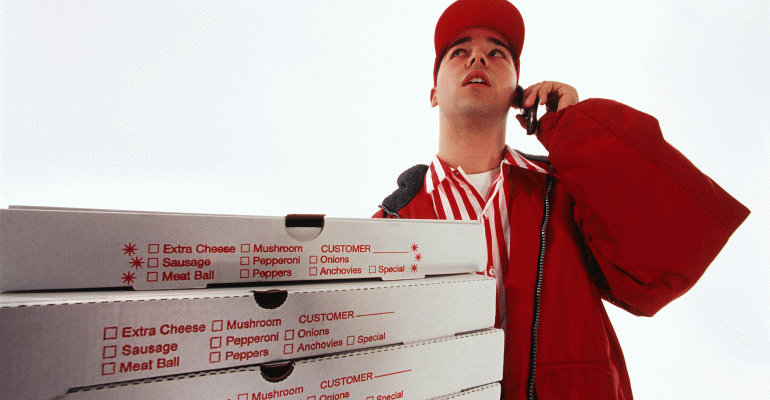In the future, “virtual” restaurants will focus solely on delivery and eliminate in-house dining, according to Grubhub CEO Matt Maloney.
Maloney made his prediction at the New York Times Food for Tomorrow conference at the Stone Barns Center for Food & Agriculture in Pocantico Hills, N.Y., last week.
He said it’s hard for restaurants to focus on in-house customers when the kitchen does 250 delivery orders a night.
“Frankly, you want the delivery to go out faster so the food is in better condition, and you want the in-house diners to drink more wine. And so there’s this prioritization they’re trying to figure out. And I work with restaurants to help them do this better.”
Maloney gave an example of an restaurateur with six concepts who is looking to open a seventh location. Should the restaurant be an entirely new concept?
“Or do you want to build a subterranean commissary kitchen that can execute dishes from all of them at the same time, without stressing the kitchen staffs of your existing kitchens, and execute a much further delivery radius because Grubhub has aggregated so many diners that are craving your brands at home?” he said.
That’s where the industry is headed in the next five to 10 years, Maloney said. It’s already happening in New York, Los Angeles and San Francisco, and he’s beginning to see it in Philadelphia, Boston and Washington, D.C., he said.
Grubhub — which will process about $2.5 billion worth of food orders this year — is also working with restaurants to create separate delivery menus to improve the at-home experience, since dishes like fries aren’t compatible with delivery.
“It could be a subset of your menu. It could be an entirely different item. You could use the transaction to test out new menu items to see how they work and then bring them back into the in-house (menu),” Maloney said.
Another area where Grubhub is helping restaurants gain efficiency is delivery. Although the majority of delivery is currently handled by the restaurants, Grubhub’s own vehicles provide delivery for less than 10 percent of orders — a percentage that is growing quickly, Maloney said.
“The reality is we can do it a lot cheaper than a restaurant can,” he added.
In response to a question about UberEATS, Maloney said he wasn’t worried about the competition because the program is very small and the technology is not unique. “The reality is, the efficiency that we are at, and most players of scale are at, are already pushing the boundaries of current technology.”
“So all of the noise, ‘We’re faster because we have a billion drivers,’ is kind of bogus because everyone’s got enough drivers to hit those efficiency gains, and it’s kind of not that big a deal,” he added.
Maloney said he doesn’t expect drone delivery to be a reality anytime soon. Drone operators’ biggest hurdle is how to handle takeoff and delivery.
“Drones are very, very far in the future for everyone. Especially for hot food,” said Maloney.
Watch the full video of the panel below:
Contact Liz Webber at [email protected]
Follow her on Twitter: @Liz_Webber





